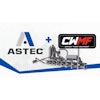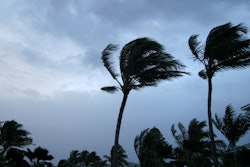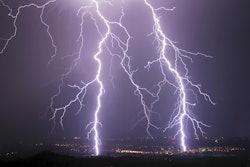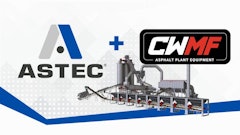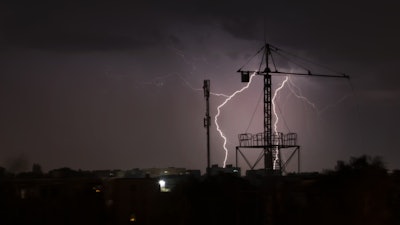
With the effects of Hurricane Ida’s impact to the Gulf Coast and eastern seaboard still fresh in our minds, contractors everywhere are dealing with the results of severe weather and the impact storms can have on a construction project.
Last year’s Atlantic hurricane season was record-breaking after officials identified 30 named storms, with 11 of them making impact in the U.S. As the climate crisis continues to get worse, construction pros are either shifting projects into recovery mode after a storm hits or putting projects at risk for further loss because of extreme weather.
To help minimize damage and accelerate recovery following a natural disaster event, contractors must prioritize safety, become familiar with their insurance policy contents and organize all key personnel records on and off site.
Priority #1: Safety is Paramount
The safety of the crew and work site should be top of mind for any contractor following wild weather events. Restrictions for access and precautionary exclusions of all non-essential personal from a site prior to and during a storm are critical to ensure workers remain protected and proper surveying takes place.
While it may appear helpful for crews to immediately dive in and begin recovery efforts, it is paramount to limit access to a site immediately after an event since too much un-coordinated activity can hinder the recovery process and potentially expose workers to unnecessary risk. Only after a site is surveyed for hidden dangers -- such as submerged electrical lines or overhead materials that are now overweight due to water intrusion -- can access to key personnel be restored.
After proper surveying efforts are complete, contractors should expect requested access from various other participants such as owner’s representatives, insurance adjusters, engineers and code officials. All will have an interest in the recovery of the property and ensure the workplace is up to safety standards. Ultimately, the role of the principle contractor is to assist all parties in getting needed access to the site while mitigating risk, reducing danger for all participants and limiting further damage.
Priority #2: Understand What Your Policy Covers
Part of the recovery process from any wild weather event will be the insurance policy contents and its possible participation in any payments made toward repairs following the damage. The specifics of a policy are unique to every project, making it important to seek professional help when navigating the many intricacies that come into play. Regardless of the policy details, contractors should leverage the help of professionals at every phase to understand what roles the various parties will play in cleanup, recovery and what coverages may be extended.
If coverage is extended, then understanding how damages will be reported and how additional costs will be documented must be evaluated immediately. In general, the early engagement of qualified professionals such as brokers and attorneys will facilitate an understanding of the roles each party will play. The needed information, documentation and proof will lead to a quicker, more collaborative settlement process.
Priority #3: Have An Emergency Response Plan in Place
As the threat of natural disasters and wild weather events increase, proper response protocols and safety planning should become a top priority for construction professionals. Worker safety, understanding the settlement process and proper record keeping are all necessary to ensure projects get back on track. Carefully considering and incorporating these factors into a written emergency response plan created prior to an event will be important to restarting work quickly.
The emergency response plan should include organizing all key personnel records on and off site that have a stake in the project.
In addition, the plan should include considerations for what to do with materials and equipment stored on site. Depending on the provisions of the contract, the ownership and responsibility of these items can vary. Regardless of who is responsible for them, it is never a good scenario to neglect properly storing equipment. There is little excuse for not parking equipment on high ground to prevent flooding, or failing to protect materials from possible storm damage. Beyond consideration for the actual items damaged, contractors may face other far-reaching consequences such as scheduling delays because of replacing long lead time items thanks to inadequate planning.
It is also good practice to identify and build strong relationships with specialty providers such as water mitigation companies, hazardous spill response units and temporary scaffolding/barricade companies that will be available on an emergency basis. Leveraging pre-established relationships and securing contact information ahead of time can make all the difference between a small problem and a big disaster following a significant weather event, saving contractors time and money.
The risk from a storm event can never be eliminated, but a written disaster plan that includes elements critical to recovery such as site safety, documentation, access control, insurance and water mitigation can help contractors weather any storm.
Justin White is vice president of specialty services and principal building consultant at Sedgwick.

